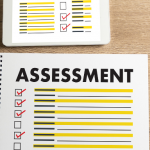Executive Summary
-
Climate risk assessment tools are increasingly crucial for green investment decisions.
-
These tools help investors identify potential environmental impacts and financial risks.
-
Understanding these assessments can lead to more informed and sustainable investment choices.
-
The integration of climate risk assessments supports compliance with international sustainability standards.
-
Expert insights and strategic use of these tools can enhance investment portfolios with a focus on sustainability.
Introduction
In the ever-evolving landscape of global finance, investors are grappling with the pressing challenge of incorporating sustainability into their portfolios. As environmental, social, and governance (ESG) criteria gain prominence, the need to evaluate climate-related risks becomes indispensable. This article explores the impact of climate risk assessment tools on green investment decisions, illustrating how these tools shape sustainable finance strategies.
Definitions / Context
Climate risk assessment tools are analytical instruments used to evaluate the potential impacts of climate change on investments. These tools help investors gauge environmental risks, identify opportunities for sustainable investment, and align with ESG frameworks.
Benefits / Pros
-
Informed Decision-Making: By quantifying environmental risks, these tools empower investors to make data-driven decisions.
-
Risk Mitigation: Identifying vulnerabilities in investment portfolios can prevent potential losses due to climate-related events.
-
Regulatory Compliance: Facilitates adherence to global sustainability requirements, such as the Paris Agreement.
-
Enhanced Reputation: Emphasizing green investments can improve a company’s image, attracting eco-conscious investors.
Risks / Cons / Challenges
-
Data Quality: The effectiveness of these tools depends on the accuracy and availability of climate data.
-
Complexity: Understanding and implementing these assessments requires specialized knowledge, which can be a barrier for some investors.
-
Cost: High-quality assessment tools may entail significant financial investment, which could be prohibitive for smaller firms.
Step-by-Step Process
How to Integrate Climate Risk Assessment Tools in Investment Decision-Making:
-
Identify Goals: Define what you aim to achieve through sustainable investments.
-
Select a Tool: Choose a tool that aligns with your investment strategy and provides comprehensive climate risk analytics.
-
Data Integration: Gather relevant data to feed into the tool for accurate analysis.
-
Analysis and Interpretation: Use the tool to analyze data and interpret the results in the context of your investment objectives.
-
Strategize: Formulate investment strategies based on insights derived from the assessment.
-
Monitor and Adjust: Continuously monitor the portfolio and adjust strategies as needed in response to new data and insights.
Consider the experience of GreenFuture Capital, a mid-sized investment firm that successfully integrated climate risk assessment tools. By doing so, they were able to identify high-risk areas in their portfolio, divest from unsustainable ventures, and reinvest in renewable energy projects, significantly boosting their ESG ratings and attracting a new wave of investors.
Case Study: GreenFuture Capital Optimizes Investment Portfolio
Expert Tips / Strategic Insights
According to climate finance expert Dr. Jane Epiidosis, “Investors should not only rely on the tools but also build expertise in interpreting the results. This dual approach ensures that investment decisions are robust and aligned with global sustainability goals.”
Tools / Resources / Calculators
-
Climate Risk Analyzer: An online tool for assessing potential climate impacts on investment portfolios.
-
Sustainable Investment Checklist: A downloadable checklist to guide green investment strategies.
-
Global ESG Benchmark Reports: Access reports and insights from leading ESG benchmarks.
Conclusion
Climate risk assessment tools are essential for navigating the complexities of green investment. By leveraging these tools, investors can make informed decisions that align with sustainability objectives and enhance their portfolio’s resilience against climate-related risks. As the demand for sustainable finance grows, integrating climate risk assessments will become a strategic imperative for forward-thinking investors.























